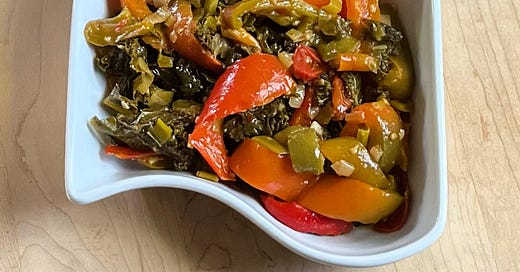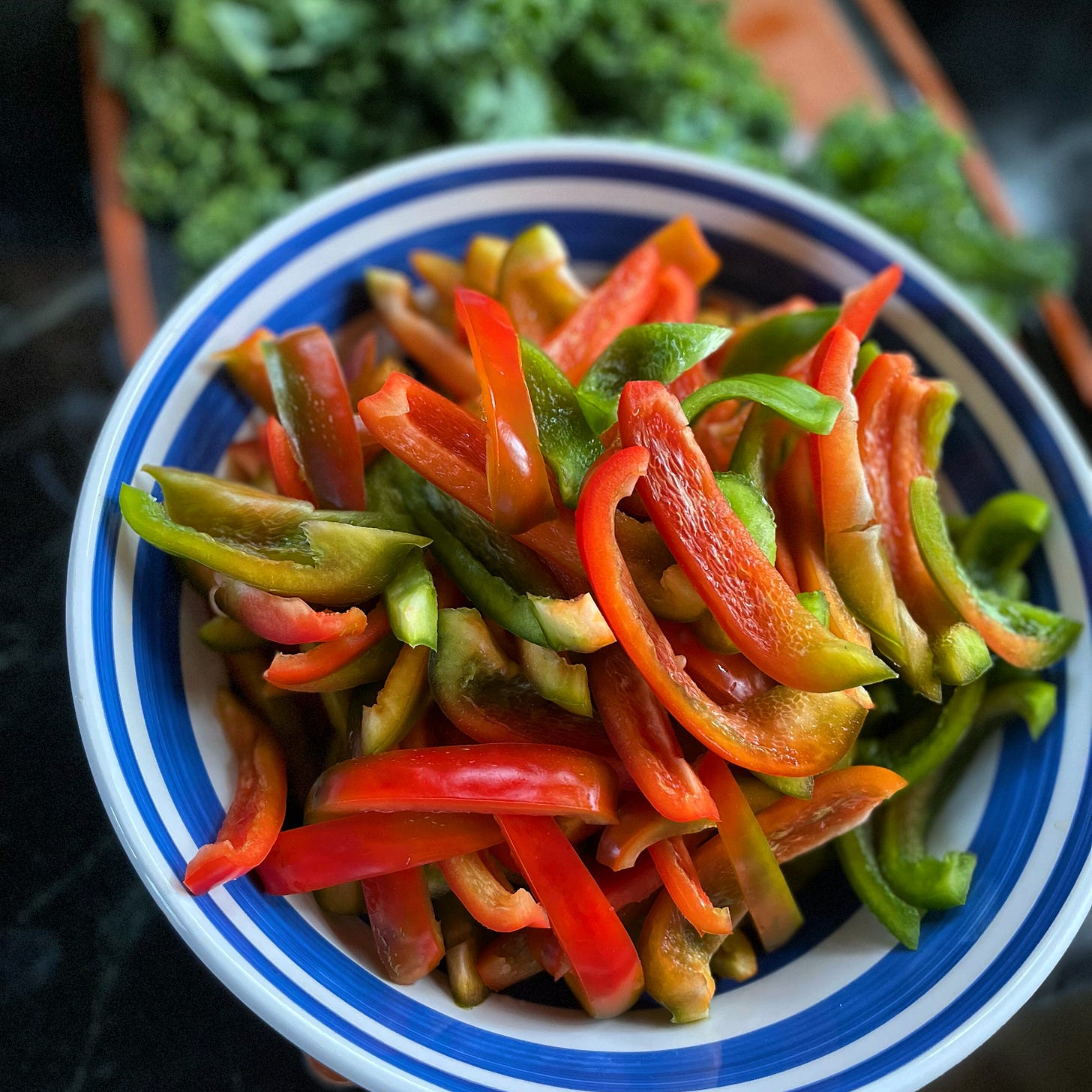Waking up to nature’s rhythms
and a recipe for a seasonally-adapted Italian peperonata to eat with everything
My friend Pete was convinced we weren’t changing the clocks this weekend.
I can understand the confusion. A matter of great debate, in 2020 Ontario voted to abolish Daylight Savings Time - but only if Quebec and New York State agreed to do the same. You can see where that ended. We’ll be getting that extra hour of sleep this weekend after all.
To make matters messier, it seems parts of Ontario, British Columbia and Quebec don’t ever change their clocks, while Yukon has abandoned DST, as has Saskatchewan. Forget trying to remember what parts of Europe are springing backwards or forwards - we have enough trouble keeping it straight here.
Messing with Mother Nature
Rather than an idea proposed by Benjamin Franklin, as is commonly believed, DST was initially the brainchild of New Zealand entomologist George Hudson, who wanted more daylight time to study bugs. By the time the idea took hold in 1918, the sales pitch was less about nature and more a postwar energy-savings measure. Either way, it was immediately detested by farmers, who somehow couldn’t explain to the cows that they would need to wait an extra hour to be milked.
Now there’s an increasing chorus that is calling for a return - or abandonment, depending on your perspective - of this rather unnatural idea of messing with Mother Nature’s wristwatch.
I hope the voices of reason prevail. It’s not an extra hour of sleep I’m looking for. It’s the enchantment of seeing the sky lighten in the slowest possible way, day after day, until suddenly there’s a crocus and it’s spring. That doesn’t require any manipulation on our part. This mysterious, magical planet we’re allowed to inhabit requires only reverence, thankfulness and a tiny bit of patience from us.
Hello, sun in my face.
Hello, you who make the morning
and spread it over the fields
and into the faces of the tulips
and the nodding morning glories,
and into the windows of, even, the
miserable and crotchety–best preacher that ever was,
dear star, that just happens
to be where you are in the universe
to keep us from ever-darkness,
to ease us with warm touching,
to hold us in the great hands of light–
good morning, good morning, good morning.Watch, now, how I start the day
in happiness, in kindness.Why I Wake Early ―Mary Oliver
Peperonata
makes 4 cups
You may be familiar with peperonata’s French cousin, ratatouille. In that Provençal dish, classic summer vegetables like eggplant, zucchini, peppers, tomatoes and onions are roasted and stewed into a melange that is undoubtedly delicious.
Italians know that deep-flavoured deliciousness doesn’t have to be complicated. Traditionally, peperonata is made with a shorter list of ingredients: perfectly ripe tomatoes, peppers in a rainbow of colours, onions, garlic. Both a sauce and a stew, it can dress a pasta dish, act as a frittata filling, make a lovely breakfast sandwich or be spread on crusty toasted bread for a smashing summer bruschetta.
But when the season advances, like nature, it’s time to adapt. This morning’s early November farmers’ market had beautiful peppers, an abundance of kale, leeks and thyme; why not make a modified version of peperonata that follows the season’s rhythm? Decidedly more nuanced and complex, this is the perfect late fall dish to dream about with that extra hour of sleep, while you still have it.
Ingredients
8-10 bell peppers, in a rainbow of colours, cored and cut into ¼ inch strips*
¼ cup olive oil
2 garlic cloves, peeled and lightly smashed
2 leeks, white and light green part only, cut into thin rings, rinsed and drained
10 ounces kale, any type, tough stems and ribs trimmed, washed and chopped
1 tsp dried chili pepper flakes
Salt and black pepper, to taste
1 398 ml (14 ounce) can cherry or chopped tomatoes
4 teaspoons sherry or red wine vinegar
4 sprigs fresh thyme
*If you’re getting your peppers at the farmers’ market, they may be smaller that conventional peppers. If so, get 10 to balance the flavours.
Heat the olive oil in a heavy Dutch oven or stock pot over medium heat. Add the garlic and cook slowly to soften, but not brown, about 3-5 minutes.
Add the kale and and ½ teaspoon of salt and stir to combine. Cook, stirring occasionally, for 5 minutes. Add ¼ cup of water and stir to combine. Continue cooking for another 2-3 minutes, until softened.
Add the peppers to the pot and mix well to combine. Add the leeks, the tomatoes with their juices and the chili pepper flakes, another teaspoon of salt and a good turn of freshly ground pepper and stir well to combine. Lower heat and simmer, uncovered, for 30 minutes
After 30 minutes, add the sherry vinegar and thyme sprigs. Stir to combine and continue simmering for another 10 to 15 minutes or or until the peppers are soft but not mushy.
Taste and adjust for seasoning, adding more vinegar, chili flakes salt and pepper as desired. Discard the thyme sprigs before serving.
Peperonata can be stored in the refrigerator for up to a week, or frozen for up to six months.








This sounds like a perfect combination of flavours!
And, on the note about the farmer and his cows, this is the day my hens will complain about the sun disappearing early and I’ll be chasing them in circles to get them into their coop for the night…